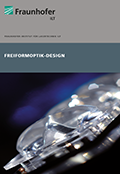The term freeform optics refers to refracting and reflecting surfaces that can be clearly distinguished from spherical and aspherical geometries. One of many application areas for freeform optics is the lighting sector, where they are used to lower the energy consumption – and with it the operational cost – of various lighting scenarios. And in addition to raising efficiency, freeform optics increase flexibility in lighting design.
The design of freeform optical surfaces no longer has to conceptually follow that of imaging optics, but instead aims to redistribute energy by light refraction and reflection. Generally speaking, the design process is intended to achieve tailored irradiance distributions while at the same time maximizing the usable light output and minimizing the number of optical surfaces.
Fraunhofer ILT develops design algorithms for freeform optical surfaces that meet these requirements. Key characteristics include the algorithms’ flexibility when designing two-part freeform optical surfaces, whereby refracting and reflecting surfaces can be combined within a single optical element. By combining two complementary freeform refracting surfaces it is possible to reduce losses caused by Fresnel reflection and, in contrast to freeform optics with only one freeform surface, increase efficiency as closely as possible to its maximum point.
Although in theory freeform tailoring methods can achieve very complex irradiance distributions, this capability is limited to point light sources. As real sources are always extended to a certain degree, it was possible only to approximate them. At Fraunhofer ILT, we have now developed phase-space-based techniques capable of working out freeform optical surfaces with extended sources, thus removing the need for approximation.

 Fraunhofer Institute for Laser Technology ILT
Fraunhofer Institute for Laser Technology ILT